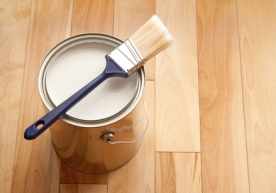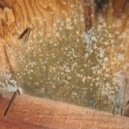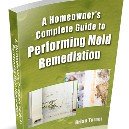Find a pre-screened local mold removal specialist Free Estimate
Find a Mold Specialist Now
Click or Call, Toll-Free 24/7
How To Use Mold Paint

If you need a paint for mold prone areas, like bathrooms, we highly recommend selecting an anti mold paint. It will look like any other quality indoor paint, but will resist the growth of mold in the future, which is important in damp areas.
Why Use Mold Resistant Paint?
Simply put, mold resistant paint resists mold growth. When mold begins to grow on a painted surface, it doesn’t just discolor the surface and make it look bad. Mold actually feeds on materials like wood and drywall, eating away at the structures in your home. Left unchecked, it can cause serious structural damage. That’s not all, though; mold can lead to numerous health problems, including chronic sinus infections, asthma attacks, bronchitis, pneumonia, inflammation of the lungs, bleeding in the lungs, sore throats, headaches, migraines, allergic reactions, difficulty breathing, coughing, wheezing, rashes, hives, exhaustion, depression, and joint pain. Using a mold resistant paint for mold prone areas helps protect you, and your family, from all of this.
Learn more about how mold exposure can affect your health.
Where Should You Use Anti Mold Paint?

Use mold resistant paint in areas subject to significant moisture, like kitchens (where steam from cooking can contribute to the development of mold) and bathrooms (where steam from showers can contribute to the development of mold). You might want to use an anti mold paint in basements, as well, since they often get a bit damp.
Keep in mind the fact that you should only apply mold resistant paint to clean, dry, mold free surfaces. Using a mold resistant paint in areas where you’ve previously experienced a mold problem can help prevent future problems, but before applying the paint, make sure to remove all traces of mold and allow the surface to dry completely. Never paint over mold, even with mold resistant paint. Mold resistant paint won’t kill mold that is already growing on a surface and painting over mold will only make the mold problem worse in the end. It’s generally impossible to remove mold from porous surfaces like drywall, so moldy materials such as drywall should be removed and replaced; never try to paint over mold.
Also keep in mind the fact that while mold resistant paint resists mold growth, it’s not a guarantee that mold will never grow there, especially if you experience significant water damage or flooding.
The Best Paint For Mold Prone Areas
Mold resistant paints contain antimicrobial ingredients that help prevent the growth of mold on painted surfaces. There are numerous brands of mold resistant paint, which you can find at most home improvement stores such as Lowe’s, Home Depot, and Menard’s. Mold resistant paints are available in a wide array of colors to suit any décor. Any brand of paint with antimicrobial properties will help prevent mold, so you’ll find plenty from which to choose. Apply mold resistant paint just as you would any other paint.
For Help With Mold Remediation and Painting
If you’ve got a mold problem and need help removing mold before you paint a room, we suggest scheduling a free consultation with a mold remediation professional. An experienced professional will come to your home, assess the situation, make recommendations and offer advice, all at no charge to you. Of course, you can hire the professional to perform the work for you if you want, but even if you decide to handle the job yourself, you will benefit from some free expert advice. During your free consultation, ask what brand of mold resistant paint the professional recommends for high moisture areas like bathrooms. For a list of experienced mold remediation professionals offering free consultations in your area, follow the link.
Return From Mold Paint To Home Page
Free Home Inspection By A Mold Removal Specialist
Search This Website
Recent Articles
-
See Our 5 Recommended Mold Removal Companies in Aberdeen, SD
Oct 08, 21 04:05 PM
-
Public Housing Tenant Sick from Mold
Apr 24, 20 01:40 PM
-
Mold Types Found In Homes .......Identification, Finding Mold, Testing
Jan 27, 20 02:32 PM




